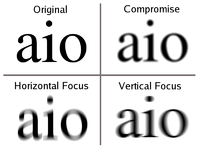
Photo from wikipedia
Abstract Elliptical ultrasonic assisted grinding (EUAG) is considered a promising technique for difficult-to-machine material grinding. However, it has yet to be fully developed because the topography generation mechanism of a… Click to show full abstract
Abstract Elliptical ultrasonic assisted grinding (EUAG) is considered a promising technique for difficult-to-machine material grinding. However, it has yet to be fully developed because the topography generation mechanism of a workpiece surface evolved using EUAG has not been elaborately addressed. Compared with other conventional grinding parameters, the ultrasonic vibration parameters (amplitude and frequency) during EUAG are the most critical factors in the generation of the surface topography. However, it is difficult to tune such parameters freely during an experiment, owing to the technical restrictions of current ultrasonic vibrators. Further, a pass-by-pass analysis of the surface material removal process is not possible to achieve during an experiment. Thus, a 3D ground surface topography generation method is developed in this study, and the surface generation process of four typical ground surfaces are analysed based on the calculated results. The four typical ground surfaces are then machined on the monocrystal silicon workpieces. The experimental results agree well with the surface topography predictions, which validates the effectiveness of the topography model. The material removal mechanism under different ultrasonic vibration parameters during EUAG is explained in this study according to the simulated abrasive cutting trajectory and ground surface. This method has shown its powerful ability to conduct a pass-by-pass analysis of the grinding process. Further, it can be used for a future investigation into the grinding vibration, cutting chips, and forces, and is not limited to EUAG, but is also applicable to other machining processes.
Journal Title: Journal of Materials Processing Technology
Year Published: 2020
Link to full text (if available)
Share on Social Media: Sign Up to like & get
recommendations!